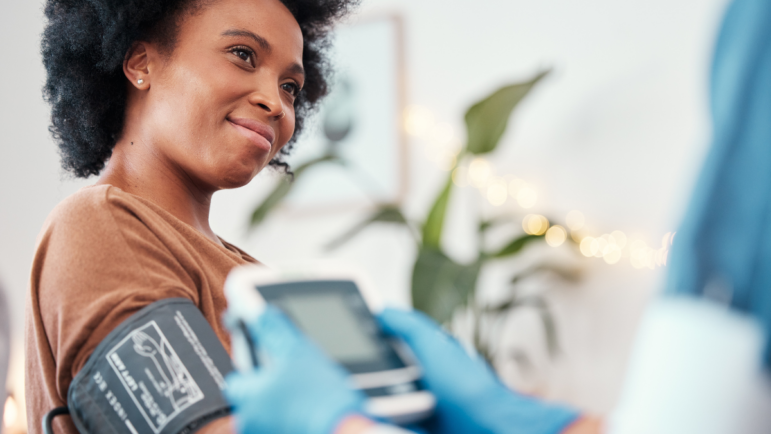Part 1: Tips for avoiding medical debt
If you’ve ever been to the hospital for a test, procedure, or service, you probably know the shock of receiving a ridiculously high medical bill. And if you’re Black, it can be even more overwhelming. Medical debt collectors may already be knocking on your door, or you’re waiting for that big raise before ever going back to the doctor again.
Debt incurred from healthcare costs is a growing issue, in part because patients are often left in the dark about their out-of-pocket expenses. While medical debt is a widespread issue in America, research shows that Black Americans are at a higher risk of medical debt and its consequences. Among Black adults, one in three have overdue medical bills, compared to one in four among white adults. Older Black adults are much more likely than white Americans to be contacted by collection agencies or have to borrow money due to medical debt. Sadly, a quarter of Black people with incomes of under $40,000 feel they’ll never get rid of their healthcare debt.
Hospital financial assistance--free or discounted care for eligible patients– could be a valuable tool to avoid medical debt and reduce these disparities. However, the process for getting help is not always smooth in practice. Eligible patients may not receive financial assistance because hospitals sometimes fail to check whether patients are eligible or wrongly deny applications. Some even delay applications but keep pursuing payments, even if the patient eventually qualifies for assistance.
For example, a 2022 New York Times investigation found that hospitals in the Providence health system were hounding low-income patients for payment, training their staff to only offer financial assistance as a “last resort.” As a result of a lawsuit by the Washington State Attorney General, Providence has refunded $21 million in medical bills and forgiven $137 more in outstanding debt.
So what can you do?
Ask about costs prior to treatment
Your costs can vary significantly depending on where you receive care, even for the same exact service, so knowing your expected cost beforehand can be powerful. Communicate with your providers to ensure they are in your insurance network before you go in for an appointment. Ask for a breakdown of cost estimates once your care team goes over your treatment plan. Confirm your coverage with your insurance before beginning treatment. However, if the out-of-pocket costs for the treatment plan offered are not affordable, try to get a second opinion or ask if there are more affordable treatment options. If you are not using insurance, then you have the right to receive a Good Faith Estimate for the total expected cost of any non-emergency items or services.
Find out if you’re eligible for financial assistance
Hospitals have flexibility in establishing their own financial eligibility criteria so consider applying for all financial assistance options you may qualify for. Though some hospitals’ policies prioritize patients who are at or below 400% of the federal poverty line, others may discount your care if you are uninsured, don’t have many assets, or live in the provider’s service area. For example, under Washington state’s law, if you are in a two-person household making $50,000 a year, you should have no out-of-pocket costs for most hospitals in the state. And always try to negotiate your medical costs, as most policies will lower your bill and allow you to make smaller payments over time.
Don’t wait until your health gets worse
Not only do Black people tend to wait until they are really sick to get care, those who owe money for medical care tend to delay or avoid treatments that could add to their debt burden. Black people are generally at higher risk for heart disease, stroke, cancer, asthma, and other chronic diseases. However, getting regular health screenings for indicators like blood pressure, blood sugar, cholesterol, and age-appropriate screenings like mammograms and colonoscopies are vital to preventing the costly burden of disease.
